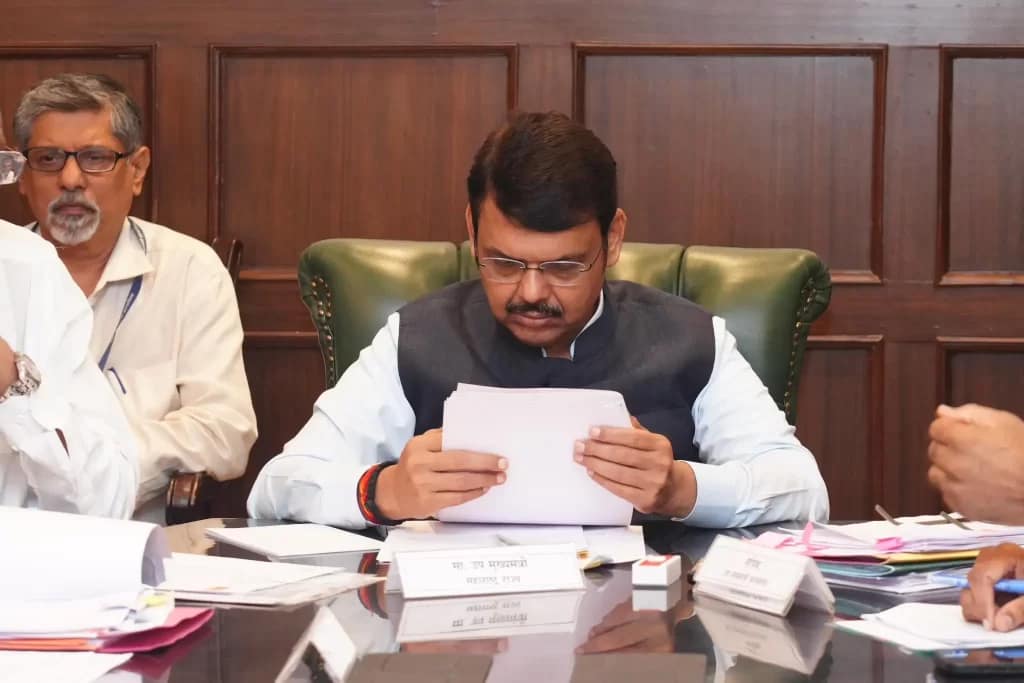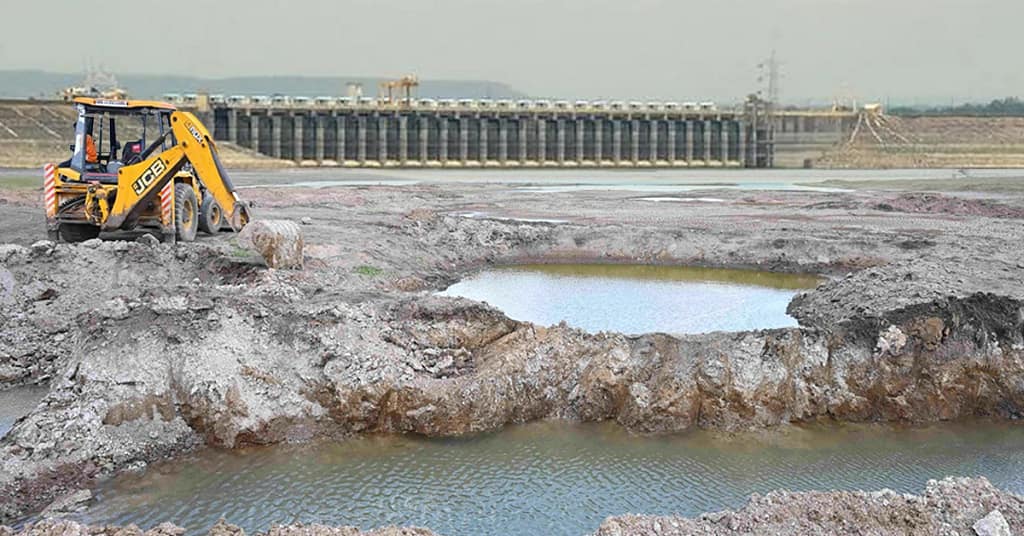Nearly 73% of Maharashtra’s agricultural land falls in the semi-arid category, marred by erratic, deficient, and delayed rainfall, that too for 2-3 months. While this is largely due to geographical and climatic reasons, and little can be done to change them, what can be done is to take a scientific water management approach towards the optimum use of rainwater and recycling of wastewater for sustainable agriculture during the dry season.
Not surprisingly, our traditional method of digging ponds and reservoirs plays an important role in rural water management due to their water storage capacity, collection of runoff water after precipitation, and groundwater recharge. However, with the runoff water also comes loose soil accumulated in the surrounding catchment area due to agricultural activities, which results in silt formation at the bottom. Over the years, the silt accumulation, which remains unnoticed from the top, chokes the water storage capacity of these reservoirs to affect irrigation and other uses.
In 2013-14, Maharashtra was hit by the worst drought in many years. So when the Devendra Fadnavis-led government came to power in October 2014, it faced a grim scenario in rural Maharashtra devastated by drought. Fadnavis quickly set priorities to tackle the agrarian problems and improve farmers’ lives. Shortly, in about a 2-month gap, he announced his first landmark project, Jalyukt Shivar Abhiyan, a holistic, multi-dimensional program with far-reaching impacts to turn around the historically distressed agriculture and farmers’ conditions.
New insights into rainwater management
In Jalyukta Shivar Abhiyan, special emphasis was put on taking all measures for rainwater harvesting and decentralized water management. Parallel to the government’s efforts, a group of NGOs carried out a pilot project in water management, identifying silt deposition in the water bodies as a major problem area. They de-silted eight traditional water tanks in Beed, Jalna, and Nanded districts of the Marathwada region and concluded that these century-old water tanks served as important water sources for local communities but years of neglect resulted in silt accumulation which compromised their water storage capacity. Further, the excavated silt was spread on the farm fields, which made the fields more fertile and productive.
The Nature Conservancy India and the Watershed Organisation Trust carried out evaluation surveys in the villages of Beed and Nanded districts to assess the benefits of this project. The study observed that this project led to an increase in the cultivated and seasonally irrigated farmland counts and a marked decrease in the number of lands dependent solely on rainfall and wasteland near the reservoirs. The addition of nutrient-rich silt to the fields enhanced the growth of crops. Other advantages included a fall in the number of people migrating to cities for jobs, improved livestock, fish production, and better plant growth. In summary, the desilting of reservoirs had a beneficial effect on farming, the local environment, and the economic well-being of nearby communities. The benefits were found to be much higher than the cost involved.

Positive mindset accepts new ideas
Learning about this experiment, CM Fadnavis promptly decided to adopt de-silting of ponds, reservoirs, and dams to help villages achieve the dual benefits of the exercise. The Maharashtra Government announced a state-wide scheme called “Galmukt Dharan, Galyukt Shivar Yojana” (literally, silt-free dams and silt-rich land) on 2nd May 2017 and set up a “Desilting Policy Committee,” which recommended that 31,459 small dams and water tanks be de-silted across the state.
As the Dy. CM and Water Resources Minister in the Mahayuti government 1.0, Devendraji approved the continuation of this scheme for the next 3 years. The Department of Soil and Water Conservation published a government decision in this regard on January 16, 2023.
The Galmukt Dharan, Galyukt Shivar Yojana
A budget of Rs. 6236 crore was approved for the project, which was expected to be completed in phases over 4 years. It was estimated that nearly 51.8 crore cubic meters of silt could be removed from the selected dams. It was estimated that nearly 51.8 Cr. cubic meters of silt could be removed from the selected dams for which the government would issue contracts. The dams had an aggregate storage capacity of 43 Lakh cubic meters and could irrigate an estimated 8,68 hectares of land. The dams selected were smaller in size (able to cater to around 2500 hectares of land) and over 5 years old.
With that, the government announced its intention to issue contracts for silt removal to achieve two objectives: increase the water-holding capacity of the dams and improve the fertility of the farm fields by distributing the silt to the farmers free of cost. The farmers would have to apply to the sarpanch for permission to take the silt. Committees at the state, district, and taluka levels were formed to look after the satisfactory implementation of the scheme. Many farmers were reported to say that the silt was good and nourishing for their farmlands.
Benefits of tank silts
Silt from tanks and reservoirs is a fine type of soil particle that is carried away from its source by water flowing over the land, along with plant waste and soil erosion, and then settles as sediment in the areas around the tanks built to collect rainwater. Over time, these sediments break down and turn into a nutrient-rich soil enhancer filled with organic material that has excellent physical characteristics. In a situation where the health of the soil is deteriorating due to the improper use of chemical fertilizers and the erosion of soil in arid regions, the application of traditional practices such as using tank silt and increasing its use could improve agricultural output. The use of tank silt on soil has been shown to lower the soil’s acidity and electrical conductivity while also increasing the amount of organic carbon and other essential nutrients like nitrogen, phosphorus, potassium, and micronutrients.
Outcome of the Galmukt Dharan, Galyukt Shivar Yojana
A committee was formed by the Maharashtra government involving the Water Resources and Management Department to review the work of the scheme after 1st year of operation revealed that almost 1.4 lakh cubic meters of silt had been removed from 1,963 dams across Maharashtra in a year and the silt, rich in nutrients, had been distributed free of cost benefitting 50,000 farmers. Another study reported that between 2017 and 2019, a total of 3 crores 23 lakh cubic meters of silt were removed from 5270 dams and ponds in the state, recovering a water storage capacity equivalent to 32 lakh tankers. The excavated silt helped 31,259 farmers by fertilizing 1.25 lakh hectares of agricultural land. The Galmukt Dharan, Galyukt Shivar Yojana proved economically viable, helped villagers in multiple ways, yielded immediate results, and gained instant popularity among the farmers.
Fertile silt encourages chemical-free farming
In this scheme, the government encouraged the farmers to apply the sludge from various dams in their fields. So the farmers got double benefit from it. On one hand, the sludge improved the soil texture, water holding capacity, soil organic carbon status, and soil fertility, on the other hand, it was taken as a locally available, low-cost alternative to chemical fertilizers. As a result, the prices of chemical fertilizers were reduced in many places.
Farmers selection criteria for dispensing silt
According to the policy, for farmers to qualify for the program, they only need to be prepared to cover the costs associated with moving silt from a percolation tank to their fields. However, it is suggested that preference should be given to the degraded farms dependent on rainwater and are located in the same village, especially those within a 500-meter radius of the dam undergoing desilting. Among these farms, priority should also be given to small and marginal farmers.
It is also suggested that financial assistance (partial/full) could be provided to small and marginal farmers for the transportation of silt. This assistance could come from government programs like MGNREGA. Additionally, a special loan with a ‘no / minimal’ interest rate could be provided to other farmers for transporting the silt, as the research indicates that they often face financial constraints due to the lack of immediate funds.
Private and Public Partnership
The cost of machinery and fuel required for lifting silt from dams and other water bodies will be borne by the government. The government is taking the help of the funds available from the CSR fund to meet this expenditure.
Monitoring and evaluation
It was suggested that a local Village-level Monitoring Committee (VMC) and a local representative of the Tehsildar oversee the desiltation efforts, while an outside/third-party assessor reviews the work.
Implementation of the scheme
To implement this scheme successfully, the government has directly entrusted the responsibility to the concerned stakeholders including the farmers. Farmers and NGOs can apply through Tehsildar. An arrangement was made to inspect the silt removal work from time to time by Talatha. The government has constituted committees at state level, district level and taluka level to ensure proper implementation of the scheme.
Government Decisions (GR’s)
2017
2023
Related posts on X:

